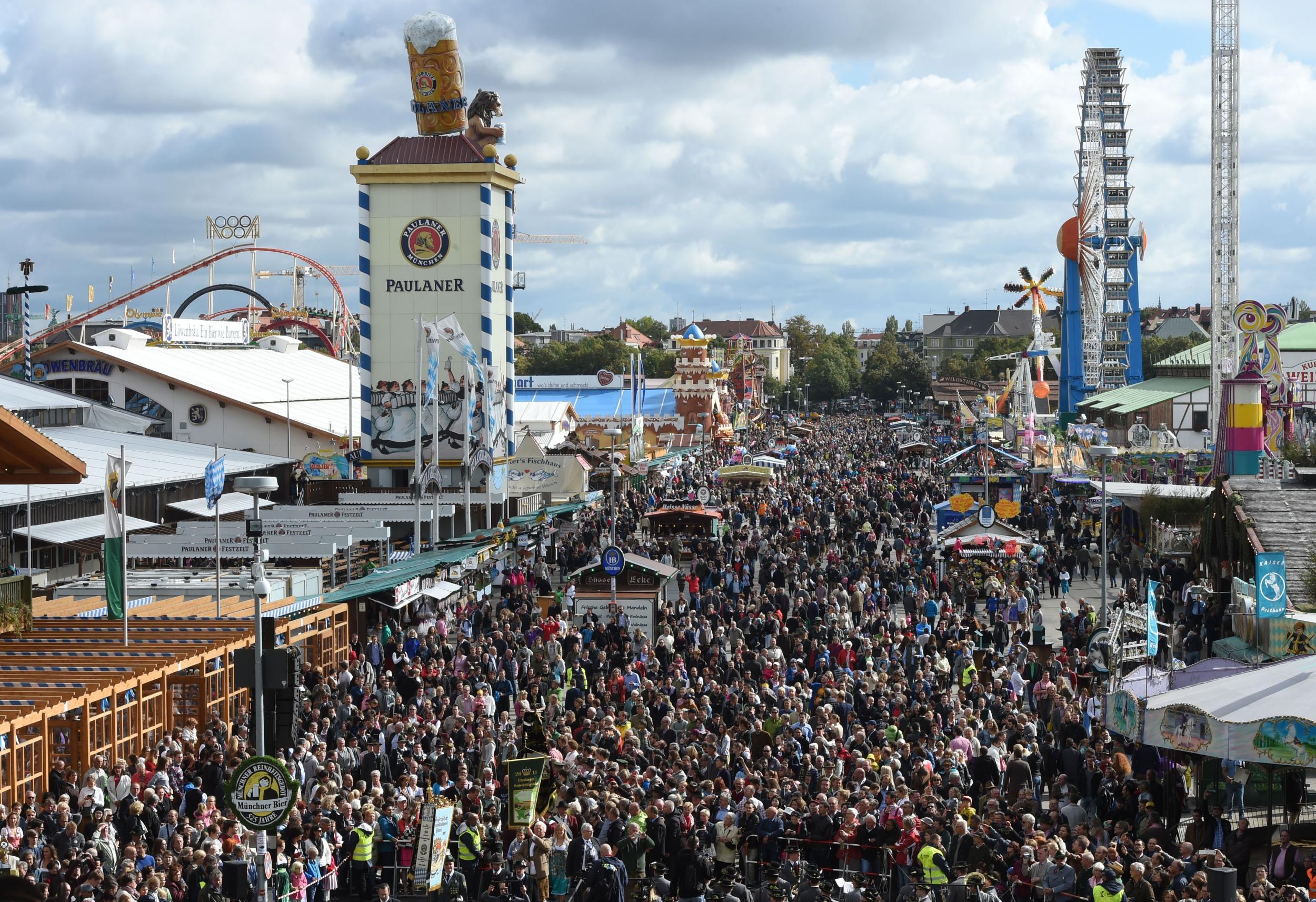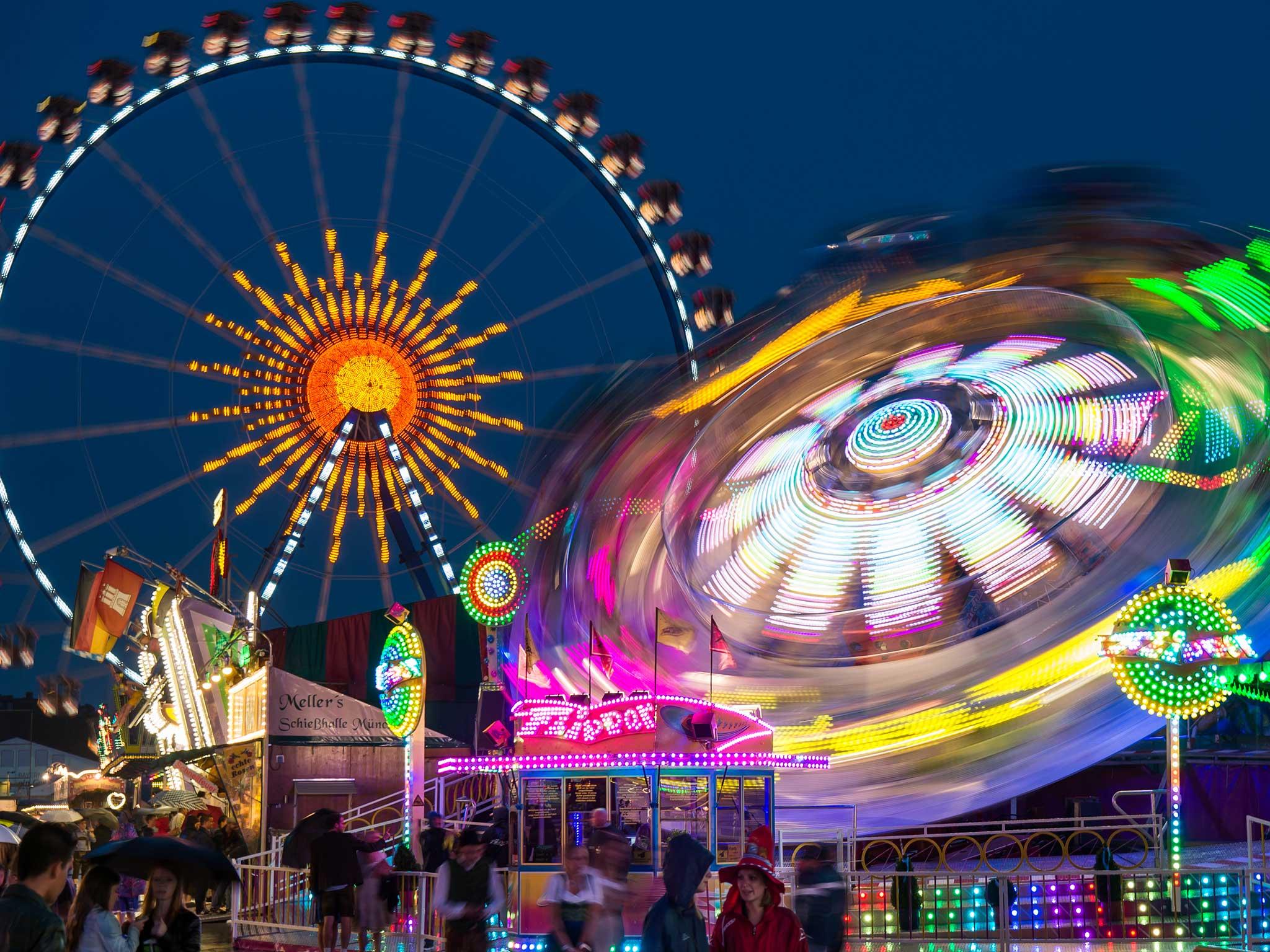Oktoberfest 2018: How the world's largest beer festival poured its first stein
Event first held in 1810 attended by 6.2m last year, with 7.5m litres of lager drunk
Your support helps us to tell the story
From reproductive rights to climate change to Big Tech, The Independent is on the ground when the story is developing. Whether it's investigating the financials of Elon Musk's pro-Trump PAC or producing our latest documentary, 'The A Word', which shines a light on the American women fighting for reproductive rights, we know how important it is to parse out the facts from the messaging.
At such a critical moment in US history, we need reporters on the ground. Your donation allows us to keep sending journalists to speak to both sides of the story.
The Independent is trusted by Americans across the entire political spectrum. And unlike many other quality news outlets, we choose not to lock Americans out of our reporting and analysis with paywalls. We believe quality journalism should be available to everyone, paid for by those who can afford it.
Your support makes all the difference.Oktoberfest, the world’s largest beer festival, begins in Munich, Germany, on 22 September.
A celebration of Bavarian folk traditions, the event is attended by more than 6.2 million tourists from around the world.
Last year 7.5 million litres of lager were drunk in 18 days, according to Oktoberfest Tours.
First held on 12 October 1810 to honour the marriage of King Ludwig I to Princess Therese of Saxe-Hildburghausen, revellers named the field where their celebrations took place “Theresa’s Meadow” (“Theresienwiese”) after their new crown princess. The land outside the old Munich city gates retains the name today.
A parade was held, children in traditional Wittelsbach costumes sang for the royals and horse races were staged, watched by 40,000 spectators from Sendlinger Hill.
The party was such a success that it was repeated again the following year, with an agricultural show added. Following an interruption caused by the Napoleonic Wars, the city fathers subsequently decided to make it an annual fixture.
A statue of Bavaria, the region’s patron, was erected in 1850 to watch over proceedings, constructed by Johann Baptist Stiglmaier and Ferdinand von Miller from a design by Leo von Klenze.
Oktoberfest was cancelled because of cholera outbreaks in 1854 and 1873, in 1866 because of the Austro-Prussian War and again in 1870 because of the Franco-Prussian War.

By 1880, electric lights lit up Theresienwiese for the first time. A year later, the first bratwurst was sold, followed by its maiden glass of beer in 1892.
Tented beer halls then replaced the old booths to cater to ever-growing demand.
It was around this point at the turn of the century that the drinking really took off, with 120,000 litres downed at the centenary of Oktoberfest in 1910.
The First World War curtailed the festivities between 1914 and 1918, as did the Second World War between 1939 to 1945.
In the run-up to that conflict, Adolf Hitler’s Nazi Party had co-opted the event, rebranding it the “German Empire Folk Festival”, banning Jews from attending or serving.

In the post-war era, Oktoberfest was restored to its former glories, the parade of horse-drawn carts ferrying in the barrels really becoming a feature in 1950, a ceremony completed when the mayor of Munich taps the first keg in the Schottenhammel tent at noon sharp.
The festival became a truly progressive force in the 1970s, hosting “Gay Days” to accommodate the LGBT+ community.
But it suffered a terror attack in 1980, which saw 13 people were killed and 201 injured when a pipe-bomb was planted in a restroom by right-wing extremist Gundolf Kohler.
Since then, Oktoberfest has gone from strength to strength as an attraction, attracting ever-more drinkers to its benches to quaff Reinheitsgebot-approved beers.
These are of course served by the festival's famous waitresses in Leiderhosen, known for their impressive ability to carry multiple steins at once.

Join our commenting forum
Join thought-provoking conversations, follow other Independent readers and see their replies
Comments